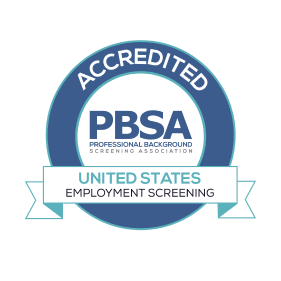How HR Background Screening Drives Safer, Smarter Hiring Decisions
HR background screening has evolved beyond a one-time compliance checkbox; it’s now a dynamic tool for risk management, brand protection, and building trust.
William Tincup, President and Editor-at-Large of Recruiting Daily, has been at the forefront of this transformation. With a background in marketing and deep roots in talent acquisition, Tincup brings a uniquely strategic view of HR’s role in today’s workforce.
How HR Background Screening Became a Strategic Imperative
William’s fascination with HR started with an appreciation for its dual nature.
“HR professionals know a company’s dark crevices,” he said, “but they’re still hopeful. That blend of realism and optimism is rare—and powerful.”
Post-pandemic, Tincup says HR background screening has become central to managing insider risk. “It’s not just about who you hire, it’s about who they become while carrying your brand.”
Remote Work Has Transformed HR Background Screening Needs
COVID-19 didn’t create remote work, but forced companies to embrace it at scale.
“Now, someone in Dallas can apply for a job in Paris, France,” Tincup said.
That global talent shift means HR background screening must now address identity verification and cross-border compliance.
“You need to know the person you’re hiring is who they say they are,” he emphasized. “The fraud risks have scaled with remote hiring.”
Why Continuous Screening is the Future of HR Risk Management
Tincup draws parallels between corporate screening and government clearance processes: “The government does periodic checks every few years. Some defense contractors do the same. But most private companies don’t.”
He argues that HR background screening can’t be a one-and-done task.
“If someone on your team gets a DUI or is involved in criminal activity, and you don’t know, that’s not on them. That’s on you. Ignorance is no longer defensible.”
Making HR Background Screening Transparent and Human
Tincup also stresses the importance of transparency and empathy.
“If someone has a conviction, don’t just toss them out. Have a conversation. Ask them to explain. Context matters.”
He believes companies should communicate the HR background screening process to internal teams and candidates.
“Candidates need to know what’s happening and why. That builds trust.”
Stripping Away the Mystery: Culturally-Aligned Hiring Starts Early
To create a mutual fit, Tincup encourages companies to demystify the job before it begins. One Boston-based company he referenced lets candidates “test drive” a tech role in a real sandbox environment before hiring. This approach reduces mismatches and ensures alignment.
“The more transparent you can be up front, the less likely you’ll be surprised, or they’ll be disappointed,” he said.
HR Background Screening Is a Trust-Building Tool
At its core, HR background screening is about more than just checking boxes; it’s about fostering transparency, mitigating risk, and building a resilient workforce.
“Everyone wants to feel seen and understood,” said Tincup. “Background checks shouldn’t be used to exclude people. They should help you understand them.”
As the lines between compliance, risk, and culture blur, leaders like William Tincup remind us that the most powerful HR tools combine data with humanity.







